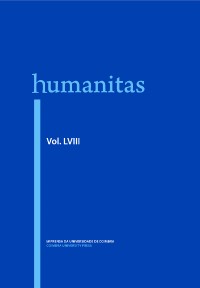Please use this identifier to cite or link to this item:
https://hdl.handle.net/10316.2/28072| DC Field | Value | Language |
|---|---|---|
| dc.contributor.author | Miranda, Margarida | - |
| dc.date.accessioned | 2014-01-27T15:22:10Z | |
| dc.date.accessioned | 2020-10-02T17:03:05Z | - |
| dc.date.available | 2014-01-27T15:22:10Z | |
| dc.date.available | 2020-10-02T17:03:05Z | - |
| dc.date.issued | 2006 | - |
| dc.identifier.issn | 2183-1718 | - |
| dc.identifier.uri | https://hdl.handle.net/10316.2/28072 | - |
| dc.description.abstract | The article explores a number of documents which provide vivid pictures of XVIth century dramatic performances. The evidence here at stake discloses an increasingly elaborate scenographic language, the growing tendency toward a profusion of decorative elements, a «realistic» characterization – to the detriment of a rather symbolic one –, experiments concerning the treatment of physical space, the development of music, the first steps toward the production of scenic illusion, and, throughout all this, the love for splendour and magnificence. Each of these features stems from the fact that this kind of theatre is written in Latin – hence the need to cause awe among an illiterate (as far as knowledge of Latin is concerned) audience; they also stem from ground‑breaking theatre theory. Jesuit theatre, anticipating much of what modern theories on drama take for granted, greatly enhances the wealth of linguistic and extralinguistic codes. Arguably, such wealth of codes has given rise to the development of the sort of scenography eventually inherited by European baroc theatre. | eng |
| dc.language.iso | por | - |
| dc.publisher | Faculdade de Letras da Universidade de Coimbra, Instituto de Estudos Clássicos | - |
| dc.subject | Teatro | por |
| dc.subject | cenografia | por |
| dc.subject | cenários | por |
| dc.subject | público | por |
| dc.subject | vestes e adereços teatrais | por |
| dc.subject | luoghi deputati | por |
| dc.subject | retórica | por |
| dc.subject | educação humanística | por |
| dc.title | Teatralidade e linguagem cénica no Teatro Jesuítico em Portugal (XVI) | por |
| dc.type | article | - |
| uc.publication.collection | Humanitas vol. 58 | - |
| uc.publication.firstPage | 391 | - |
| uc.publication.lastPage | 409 | - |
| uc.publication.location | Coimbra | - |
| uc.publication.journalTitle | Humanitas | - |
| uc.publication.volume | 58 | por |
| uc.publication.section | Artigos | - |
| uc.publication.orderno | 21 | - |
| uc.publication.area | Artes e Humanidades | - |
| uc.publication.manifest | https://dl.uc.pt/json/iiif/10316.2/28072/257799/manifest?manifest=/json/iiif/10316.2/28072/257799/manifest | - |
| uc.publication.thumbnail | https://dl.uc.pt/retrieve/12005996 | - |
| item.grantfulltext | open | - |
| item.fulltext | With Fulltext | - |
| Appears in Collections: | HVMANITAS | |
Files in This Item:
| File | Description | Size | Format | |
|---|---|---|---|---|
| humanitas58_artigo21.pdf | 369.88 kB | Adobe PDF |  |
Items in DSpace are protected by copyright, with all rights reserved, unless otherwise indicated.
